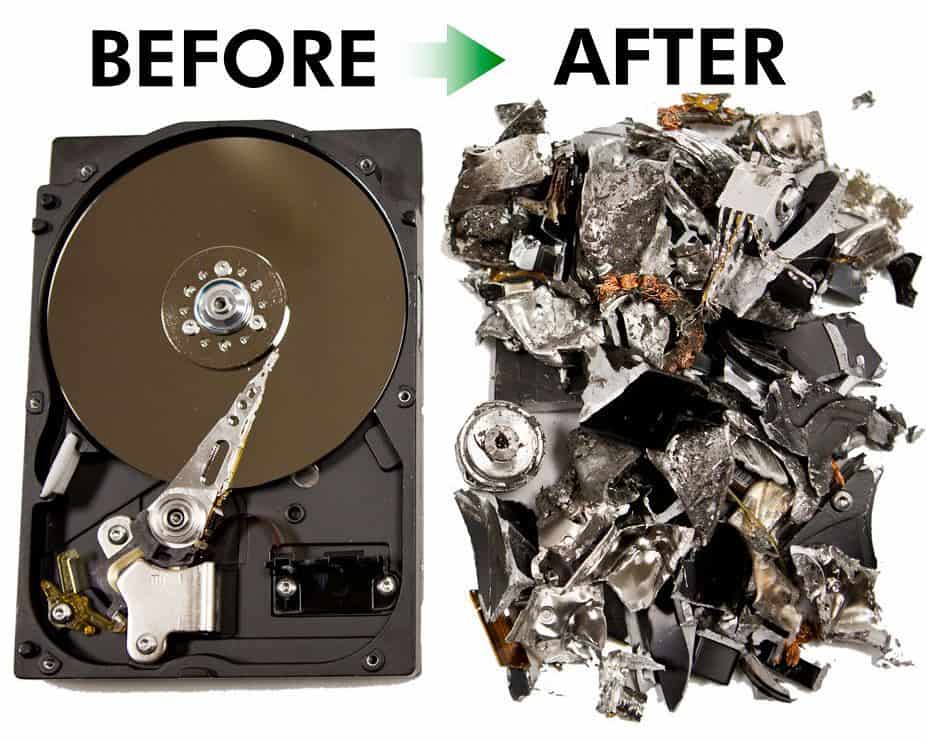Data Destruction Solutions: A Crucial Element in Your Cyber Security Method
Data Destruction Solutions: A Crucial Element in Your Cyber Security Method
Blog Article
Discovering the Importance of Data Destruction in the Context of Computer System Protection Providers and Protecting Confidential Information
In an age where information violations are increasingly typical, the value of effective information devastation can not be overstated. What techniques can companies implement to enhance their information devastation protocols?
Comprehending Information Devastation
Data damage is an essential component of computer security that involves the irreversible removal of data from storage space gadgets to avoid unapproved access and possible data violations. In an increasingly digital landscape, organizations deal with enhanced threats connected with sensitive info being incorrectly accessed or made use of. Efficient information damage safeguards versus these hazards, making certain that confidential dataâEUR" such as customer information, intellectual property, and financial recordsâEUR" can not be recovered after disposal.
Understanding the importance of data destruction extends beyond mere compliance with lawful and regulatory frameworks; it is vital for keeping business integrity and trust fund. When data is improperly managed or inadequately destroyed, the repercussions can be severe, including financial loss, reputational damage, and legal liabilities.

Approaches of Information Elimination

One widespread approach is information wiping, which entails overwriting existing information with arbitrary patterns multiple times. This technique renders the original data irretrievable, making it a popular choice for organizations seeking to protect confidential information.
Another method is degaussing, which uses a powerful magnetic field to disrupt the magnetic domain names on storage space tools, properly getting rid of the information. This strategy is specifically efficient for magnetic media however is not suitable to solid-state drives.
Physical damage is one more robust method, entailing the shredding or squashing of storage devices. This approach warranties that information healing is practically impossible, making it optimal for extremely sensitive details.
Last but not least, file encryption can work as a complementary method to data obliteration. By securing data before removal, organizations can include an extra layer of safety, ensuring that also if remnants are recouped, they continue to be hard to reach without the decryption key. Each approach must be chosen based upon the level of information sensitivity and the specific protection demands of the organization.
Legal Conformity and Data Protection
Organizations need to navigate a complicated landscape of legal demands related to information safety, especially after executing approaches of information removal. Various laws, such as the General Information Defense Guideline (GDPR) and the Medical Insurance Mobility and Responsibility Act (HIPAA), enforce strict standards on exactly how companies should deal with and get rid of of delicate data. Failure to comply with these guidelines can bring about significant lawful consequences, consisting of substantial fines and reputational damages.
Data damage processes should be meticulously recorded to show compliance with relevant laws and criteria. This documentation not just works as proof of adherence to legal responsibilities yet also illustrates a next page commitment to securing delicate details. Organizations should also establish clear policies concerning data retention and damage timelines, making sure that information is not held longer than essential.

In addition, normal audits and analyses of information damage practices are important to maintain conformity and adjust to progressing legal frameworks (data destruction). By proactively addressing lawful needs, companies can alleviate dangers linked with data breaches and show their dedication to information safety. Ultimately, focusing on lawful compliance in information damage processes is not simply a regulative obligation, yet an essential element of a robust information safety and security approach
Effect on Company Credibility
The reputation of an organization can be substantially impacted by its technique to data devastation and administration. In today's electronic landscape, where data violations can happen at any kind of moment, the failing to appropriately get rid of sensitive details can result in severe effects. Organizations that inadequately take care of information destruction threat subjecting confidential consumer info, which not just breaks privacy laws yet likewise deteriorates depend on amongst clients and stakeholders.
A damaged credibility can result in lowered consumer commitment, as clients a knockout post become hesitant to involve with a business that has actually shown negligence in safeguarding their information. Negative publicity surrounding a data violation can have an enduring result, as potential customers might be discouraged by the viewed absence of security. This can lead to a direct decline in earnings and market share.
Moreover, organizations that prioritize data devastation as part of their safety approach can enhance their reputation by showcasing their commitment to protecting delicate details. By adopting strict information management methods, companies can not just reduce dangers however additionally position themselves as reliable entities in their respective industries, therefore reinforcing their total brand name image.

Ideal Practices for Secure Disposal
Carrying out best practices for secure disposal of information is necessary for mitigating threats related to data breaches and making certain compliance with privacy policies. Organizations should take on a detailed data disposal plan that outlines treatments for both electronic and physical data damage.
For physical data storage space tools, such as hard disks, shredding or degaussing is recommended to prevent information healing. Additionally, companies should keep a chain of wardship documentation during the disposal process, guaranteeing liability and traceability of disposed products.
For electronic information, using software program that sticks to market criteria for data cleaning is essential. This software application should overwrite existing data several times, making recovery practically difficult. It is also crucial to validate the performance of the information destruction process with audits or third-party analyses.
Educating employees on protected disposal methods includes an additional layer of security, as human error can commonly bring about information exposure. On a regular basis reviewing and updating disposal policies guarantees positioning with progressing guidelines and technical advancements. By implementing these best methods, organizations can considerably minimize the danger of unapproved information accessibility and enhance their overall information defense technique.
Conclusion
To conclude, information destruction is a basic element of computer system security services that guarantees the protection of secret information from unauthorized access. Implementing effective methods of data elimination, adhering to lawful compliance, and recognizing the influence on organization online reputation are important elements of a detailed information safety and security strategy. By adopting best methods for protected disposal, companies can promote count on with customers and secure sensitive information, eventually contributing to an extra protected electronic landscape.
In an age where data violations are increasingly check my blog usual, the relevance of effective information damage can not be overemphasized.Data devastation is an essential component of computer system protection that includes the permanent elimination of information from storage tools to avoid unapproved access and possible data breaches. Organizations should likewise develop clear policies relating to data retention and damage timelines, ensuring that information is not held longer than required.
By proactively resolving legal needs, organizations can reduce threats associated with information violations and demonstrate their dedication to data protection (data destruction). Eventually, focusing on legal conformity in information destruction procedures is not just a regulatory responsibility, but a basic aspect of a durable information safety and security approach
Report this page